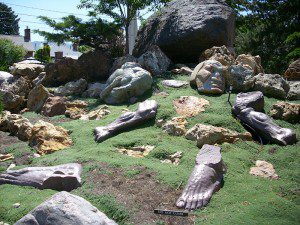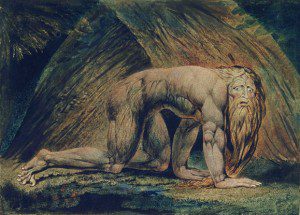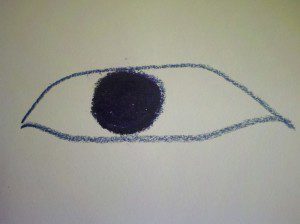
In yesterday’s article, we saw how Daniel found a dream that King Nebuchadnezzar II claimed he had lost. Scholars suspect that the content of the symbolic dream of the composite statue was invented in Hellenistic times, perhaps around 200 BCE, to reflect the later unfolding of events and to serve the propaganda agenda of a later time. The empire of iron and clay is either Greece or Rome, according to your preference. The vision of the rise and fall of great empires and the coming of a heavenly kingdom on earth continues to fire the religious imagination, notably of Jehovah’s Witnesses and Mormons.
Whether you regard it as legend, history or revelation, the story of how Daniel retrieved a dream for the king provides biblical authority for a method of active dreaming that was understood by many ancient and indigenous peoples. It is not enough to interpret dreams from the outside; to get to the meaning and truth of a dream, you must develop the ability to go inside the dreamspace.
On one tablet from ancient Mesopotamia, a dream expert is described as “one who lies at a person’s head.” Picture this: the “dream questioner” (another local name for the dream expert) lies down next to someone with the intention of shifting consciousness and entering that person’s psychic space, in order to solve a puzzle, or help with nightmare terrors, or to bring back information from a dream that the dreamer is missing, even a whole dream.
Daniel does not lie down next to Nebuchadnezzar (though he may have wished to do so); he enters the king’s dream from a distance, having sought divine guidance and protection. In entering such territories, it’s always advisable to have appropriate guidance systems. Later in the Book of Daniel, we learn that Daniel had a special working relationship with the archangel Gabriel, who plays a very special role, as the Master of Dreams, in the conception and birth of the two other great religions of the Book.
Previous: Daniel finds the king’s missing dream
Adapted from The Secret History of Dreaming by Robert Moss. Published by New World Library.

